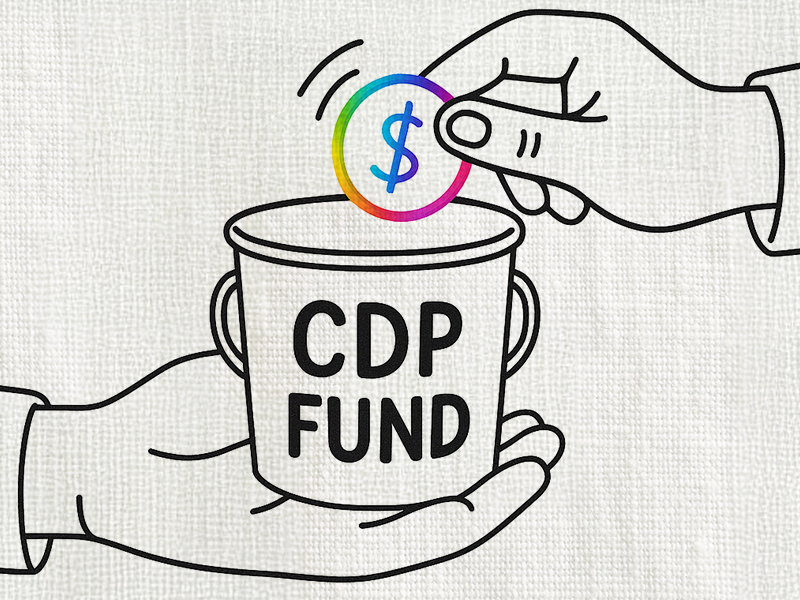
Building a CDP on a shoestring budget
When budgets are tight but expectations are high, the smartest tools might already be in your stack. With a few strategic tweaks, your CRM could be the key to unlocking big CDP-style capabilities without the big spend.

Unifying customer identity across systems is valuable. Having a clear and connected understanding of your supporters, customers, users—whatever term fits—is foundational to delivering meaningful, consistent experiences.
But for many organisations, a Customer Data Platform (CDP) is either an unreachable investment or an unreasonable one.
The good news? With the right mindset, smart integrations, and a bit of clever configuration, you can unlock many of the benefits of a CDP using the systems you already have.
What is a CDP, Anyway?
A Customer Data Platform (CDP) is a system that collects, unifies, and organises customer data across all your platforms. It pulls together touchpoints—web, email, SMS, phone, ads, CRM, you name it—into a single, persistent profile for each user.
Think of it like a giant address book that also knows what each person opened, clicked, downloaded, said, bought, or asked for. Crucially, it’s not just for analysis—it’s built for activation. The goal isn’t just to know your audience; it’s to act on that knowledge in real time.
But how does a CDP differ from a CRM or marketing automation tool?
In short: a CDP connects the dots. But so can a well-set-up CRM—with the right help.
Many CRMs Are Already Set Up to Help
Given that CRMs are designed to manage customer records and relationships, they’re already well positioned to serve as a central identity hub.
They often just need a bit of configuration—or a shift in how you approach them.
The key question becomes: how do you get that ID out of the CRM? How do you access it, share it, aggregate it, analyse it, reconcile it?
Take Salesforce, for example. It has something called the Individual object. You can use this as a unique record for every customer, tying together subscriptions, preferences, privacy settings, and more.
Or in HubSpot—you can link contact data across forms, emails, and events using a unique contact ID. Same for Pipedrive, which handles identity consistently but has its own quirks for data in and out.
The Real Unlock: Consistent Identity Access
If you can get your unique customer ID out of your CRM and into the other systems where interactions happen, you're most of the way there.
It becomes your reconciliation key—a way to:
- Link anonymous interactions (e.g. website visits) to known users
- Bridge siloed systems
- Enable unified reporting and analytics
Think of it like planting the same seed (your unique ID) in every garden (your platforms). That way, when it grows, you can trace the roots.
How to Build Your Own 'Mini-CDP'
Some of the core technology concepts that enable this include understanding what information each platform can pass, and how you can collect it consistently.
1. Direct System Integrations (APIs)
- Ideal scenario: systems talk to each other directly
- Often expensive or complex to implement and maintain
2. URL-Based Data Transfers
- Use merge tags in email systems to pass data through URLs (e.g. user ID, segment, preferences)
- Similar to UTM tags—simple and often overlooked
3. Persistent Website Profiles
- Use forms and cookies to build an anonymous (but persistent) profile over time
- Store key indicators (e.g. customer status, interests, location)
- Respect privacy—no personally identifiable info unless consent is given
4. Custom Data Layers (e.g. via GTM)
- Store temporary info about users in a structured way that other platforms can access
- Commonly used for segmenting or tracking anonymous users
5. Low-Code / No-Code Tools
- Platforms like Zapier or Make.com help sync data between systems without a developer
6. Rules Engines / Workflow Tools
- Many CRMs or CMSs support logic-based rules to trigger automations or data changes
Even basic custom development—adding a small script to your website—can dramatically improve your ability to track, personalise, and connect user data.
If you can get data flowing, you can get insight flowing.
Why Bother?
Because people expect their experience to feel human, relevant, and seamless.
- Personalised messages and offers
- Ads that make sense
- Conversations that pick up where the last one left off
If a system misunderstands you—or worse, forgets you—it can feel disjointed and frustrating. It breaks trust.
On the flip side: when people feel seen and understood, they’re more likely to stick around, engage, and support what you do.
That’s especially important in the purpose-driven space.
Charities and not-for-profits rely on the compassion and trust of others. That trust comes from showing the value of their support—and showing that you’re using resources wisely.
Whether someone gives $1 or $1 million, they deserve to know it counts. A consistent, connected experience helps build that confidence.
Who Needs a Full CDP?
Large organisations do.
- Complex data environments
- Regulatory or compliance requirements
- Big teams and big budgets
- Enterprise reporting and insight demands
For them, a CDP is not just useful—it’s essential. At scale, DIY solutions just don’t hold up.
One Final Thought
A CDP is ultimately about delivering a connected experience that feels human, seamless, and valuable.
It could be a global charity. It could be a local community pantry. The principle is the same:
You don’t need to start with a full CDP. You just need to start with the outcome in mind.
Then build towards it step by step with what you can afford – or ideally – what you already have.







